Severance letter template
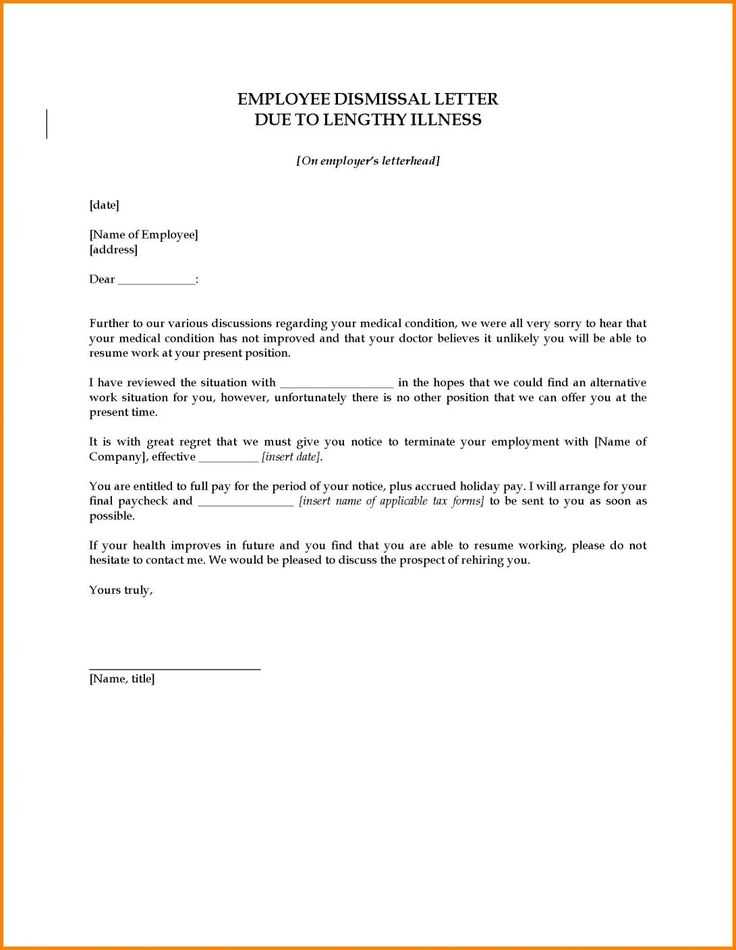
When crafting a severance letter, clarity and professionalism are key. Be sure to include the effective termination date and outline the terms of the severance package in clear language. Avoid ambiguity to prevent any misunderstandings in the future.
Start with a direct statement of the employee’s departure, providing key details such as their final working day. Follow this by specifying any severance benefits, including pay, health insurance, or other compensations that may be part of the agreement. Make it clear how these benefits will be processed.
End with a polite and respectful closing, offering support if needed, and ensuring the employee understands any actions they need to take before leaving. Reinforce that the company values their contribution and wishes them well in their future endeavors.
Severance Letter Template: A Practical Guide
Start the letter by addressing the recipient formally. Clearly state that the purpose is to notify the employee of their severance. Include the effective date of their separation. Keep it brief and direct.
Key Elements to Include
The first paragraph should mention the employee’s position and the reason for the separation. If applicable, outline any severance benefits they will receive, such as compensation or continued benefits. If the decision is based on performance or restructuring, briefly state this in a professional tone.
Follow up with a section that confirms the return of company property, if necessary. Specify any remaining steps for the employee to complete, such as exit interviews or final documentation. Be clear about deadlines and any further action required.
Final Considerations
End the letter with a brief expression of appreciation for their work. Even if the departure is under difficult circumstances, remain polite and professional. Sign the letter with your official title and contact information for any follow-up questions.
Key Components to Include in Your Severance Letter
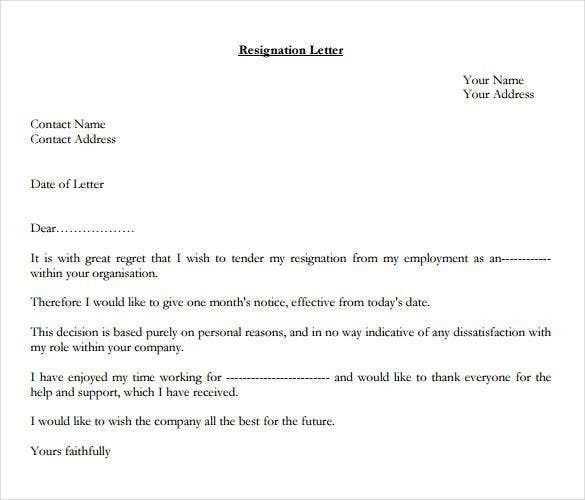
Begin with a clear statement of termination. Specify the last working day and whether the departure is voluntary or involuntary.
Include any severance pay details. Outline the amount, payment schedule, and any outstanding wages or bonuses due to the employee.
Explain benefits continuation. Clarify the status of health insurance, retirement plans, or other benefits, and specify how long they will remain active after termination.
Provide information on return of company property. List any items that need to be returned, such as keys, equipment, or documents.
State any confidentiality or non-compete agreements. Reaffirm the employee’s obligations post-termination and reference any legal documents that still apply.
Mention the opportunity for a reference or recommendation, if applicable. Offer assistance with job placement or career transition services, where possible.
Conclude with an acknowledgment of the employee’s contributions. Keep the tone professional and respectful, even if the termination is due to performance issues.
How to Address the Employee’s Last Day
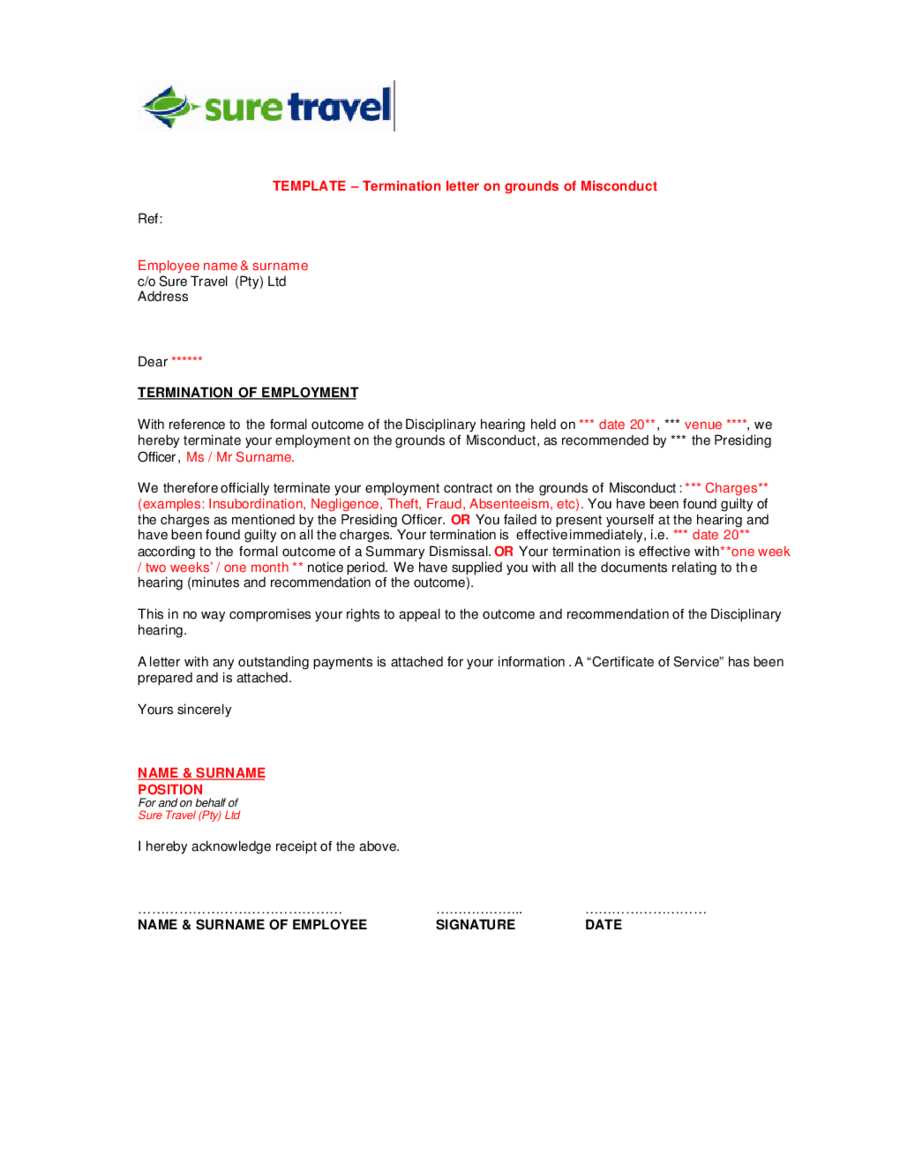
Plan a clear and organized exit process. Ensure all the employee’s tasks are transitioned to others, and provide the necessary tools for a smooth handover. Prepare an exit checklist to help them tie up loose ends, such as returning company property and completing pending work. Allow time for a final meeting to discuss their experience and future steps.
Express appreciation for their contributions. Acknowledge the specific achievements they made during their time at the company. Acknowledge their skills, commitment, and growth. A thoughtful thank-you message will make a positive impact.
Encourage a final feedback session. Allow the employee to share their perspective on working with your company. This can offer valuable insights and help improve future processes. Listening attentively to their comments also shows respect for their experience.
Make the departure personal. Instead of a generic farewell, offer a small token of appreciation, like a farewell card or gift. This gesture will make the employee feel valued and respected. Ensure the team also has an opportunity to say goodbye, either via a casual gathering or a team email.
Determining Severance Pay and Benefits
To calculate severance pay, refer to the employee’s contract or company policy, which may outline specific formulas for payout. If no clear guidelines exist, consider the following factors:
- Length of Service: Severance pay is often based on the number of years an employee has worked. A common formula is one week of pay for every year of service.
- Salary or Hourly Rate: Calculate severance pay based on the employee’s current salary or hourly wage. Include any bonuses or commissions earned regularly.
- Employment Contract or Collective Agreement: Review any signed contracts or agreements that may specify severance terms, including benefits like unused vacation days or stock options.
Benefits, such as health insurance, are also an important consideration. Many companies extend health coverage for a limited time after termination. To determine this:
- Health Insurance Coverage: Verify the terms in the employment contract regarding post-termination healthcare coverage, including COBRA eligibility or company-specific continuation benefits.
- Unused Vacation Days: Check the employee’s remaining leave balance. Some employers pay out unused vacation days in addition to severance pay.
- Retirement Plans or Pensions: Confirm if there are any benefits that need to be settled, such as pension funds or retirement contributions that may be owed to the employee.
Lastly, ensure that any payments or benefits provided align with local labor laws, which may mandate minimum severance pay or additional benefits. Always consult a legal professional to avoid discrepancies and ensure compliance with all regulations.
Communicating Non-Compete and Confidentiality Agreements
Clearly outline the terms of non-compete and confidentiality agreements during the termination process. Ensure that the employee understands the specific clauses, including the duration and geographical scope of the non-compete agreement. Provide them with a copy of the signed agreements and clarify their obligations in writing.
Discuss the importance of confidentiality obligations post-employment. Emphasize that they are legally bound to maintain confidentiality regarding proprietary information and client data. Highlight the consequences of disclosing sensitive information without authorization. Make sure the employee knows their responsibility to return company property, including documents or digital assets, upon leaving.
Offer the employee an opportunity to ask questions about these agreements. This approach encourages transparency and reduces potential misunderstandings. Avoid using legal jargon that could create confusion. A clear, direct conversation will ensure both parties are aligned on expectations and prevent future disputes. Make sure to keep records of the communication for reference.
Providing Information on Return of Company Property
List all items that must be returned before the employee leaves the company. Include items like keys, laptops, phones, company IDs, and any other property that belongs to the organization. Make it clear that these items need to be returned by the last day of work.
Key Items to Return
| Item | Details |
|---|---|
| Company Laptop | Ensure the laptop is returned with all accessories like chargers, docking stations, and cases. |
| Company Phone | Return the phone with the original SIM card and any company-specific apps uninstalled. |
| Keys and Access Cards | All office keys, security cards, or access tokens must be returned. |
| Company Documents | Return any physical or digital documents that belong to the company. Ensure sensitive information is removed from personal devices. |
| Uniform or Uniform Parts | Return all company-issued clothing, uniforms, or safety gear. |
Steps for Return
Establish a clear procedure for returning company property. Schedule a return meeting where the employee hands over the items to the appropriate department. Ensure the employee has enough time to gather all belongings. After the return, verify that all items are accounted for. Make a note of any missing items for follow-up.
Final Steps to Ensure Proper Documentation
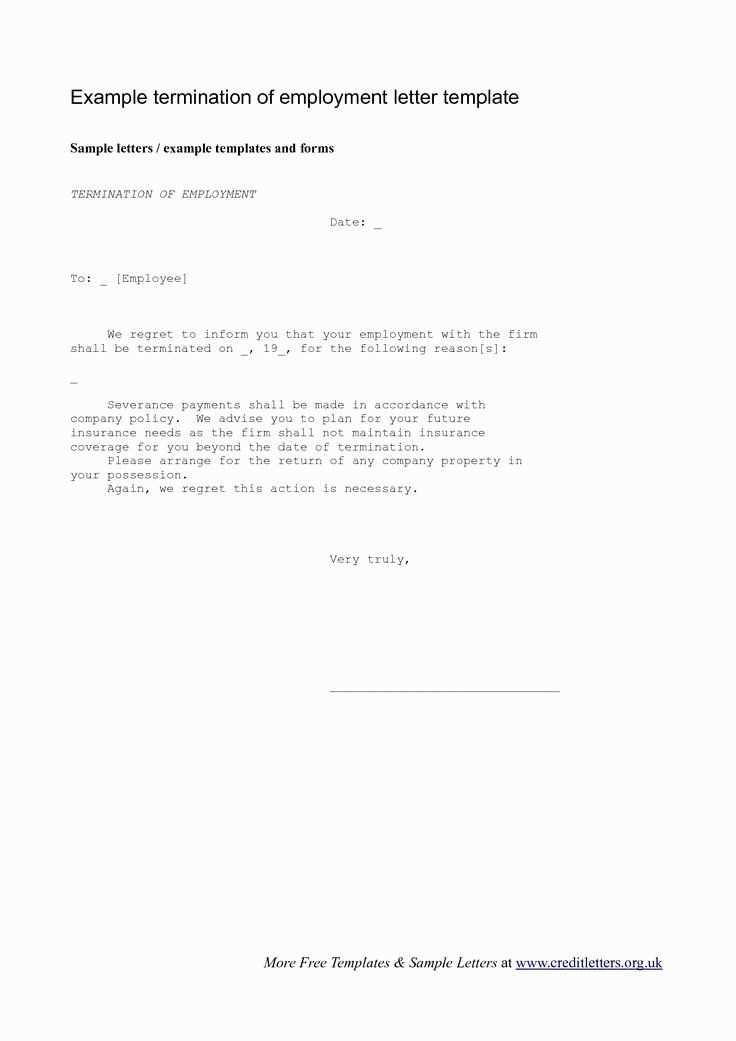
Double-check the severance letter for accuracy before sending it. Ensure that all personal and job-related details are correct, including names, dates, and termination reasons. It’s vital to avoid any discrepancies that might complicate future communication.
Confirm Required Signatures
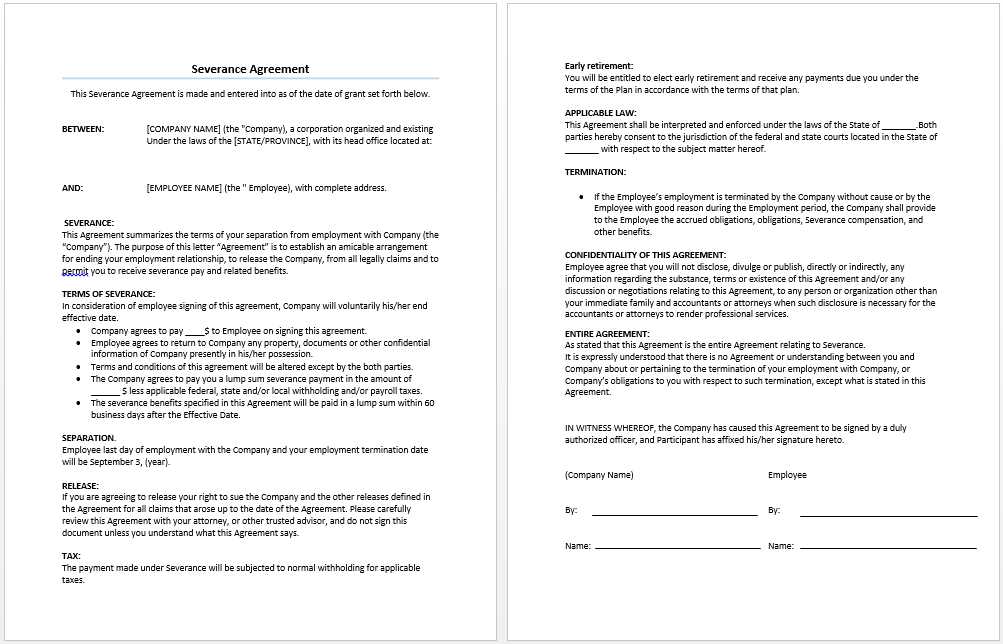
Make sure both parties, the employer and the employee, sign the document. This includes obtaining signatures from relevant management members if required by company policy. Verify the date and location of signing as well.
Distribute Copies and Store Securely
- Provide a signed copy of the letter to the employee for their records.
- Store the letter in the employee’s personnel file, either digitally or in physical form, based on your organization’s policy.
- Consider sending the letter via certified mail or another method that ensures delivery and receipt acknowledgment.
By following these steps, you will maintain clarity and ensure that all involved parties have the necessary documentation to prevent future disputes or confusion.